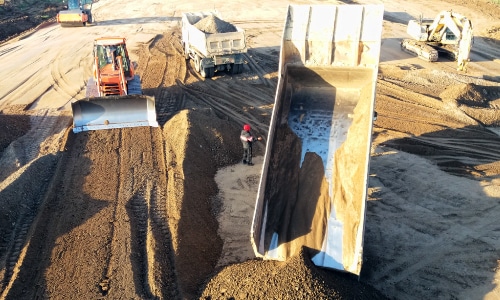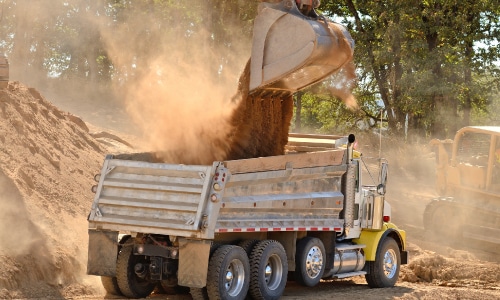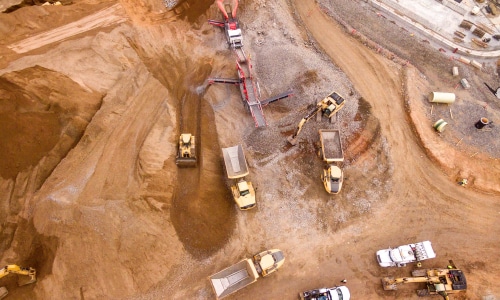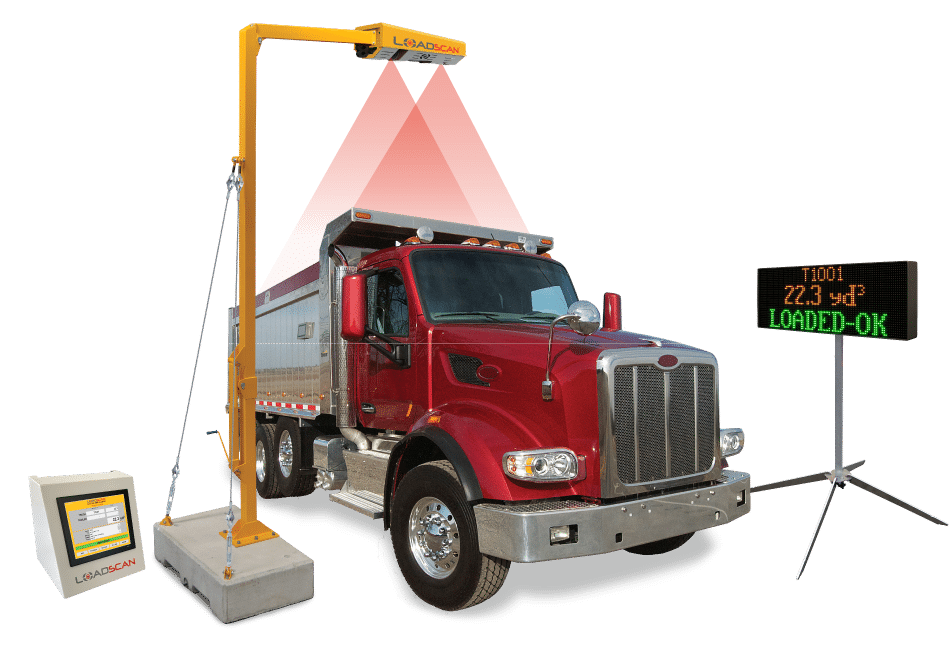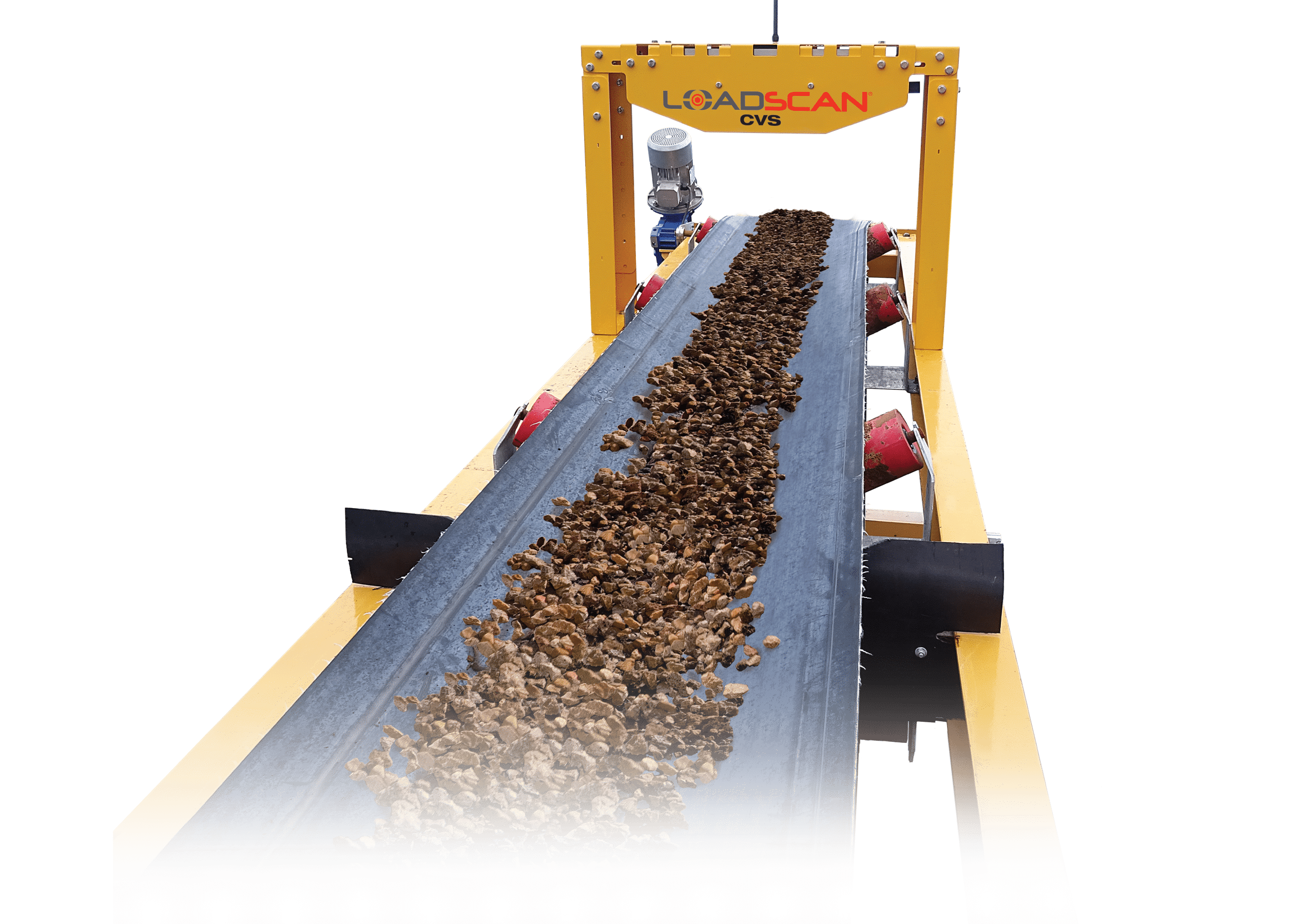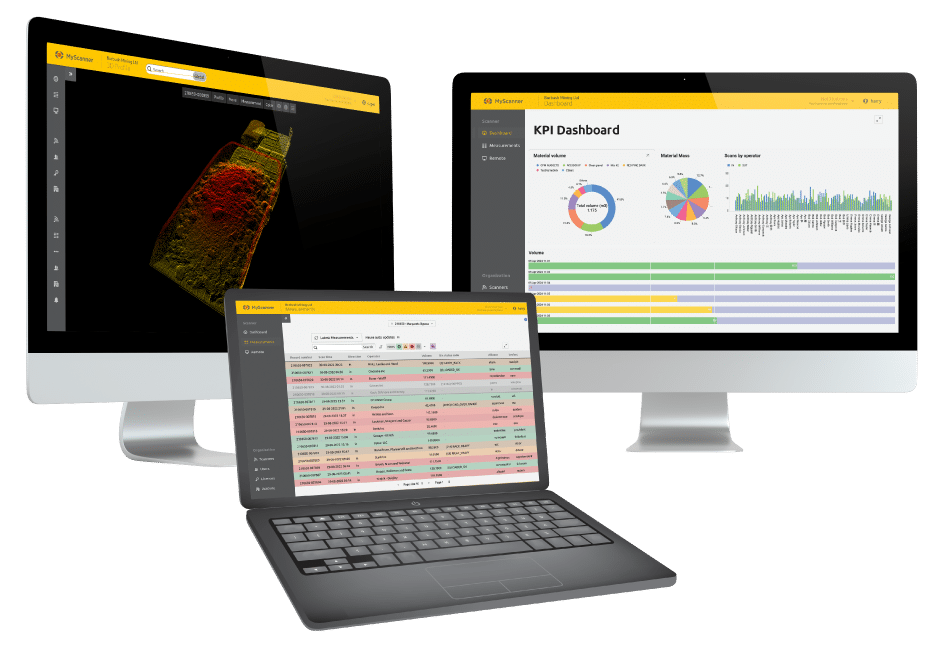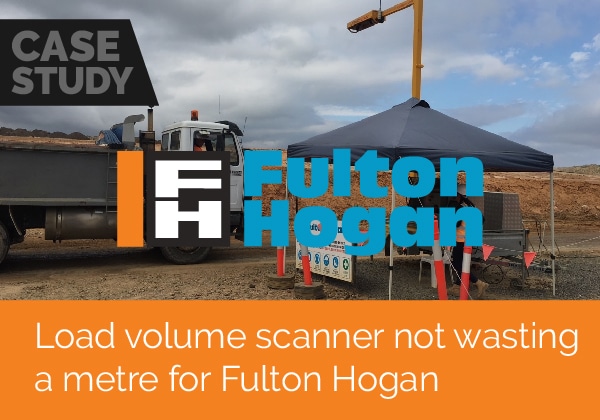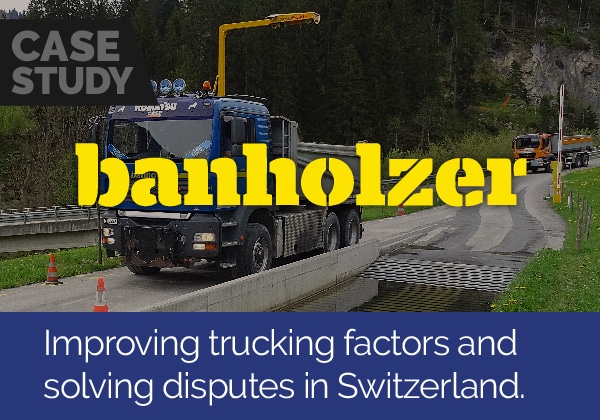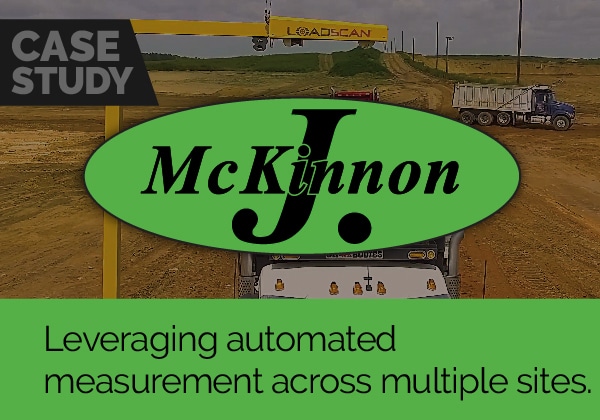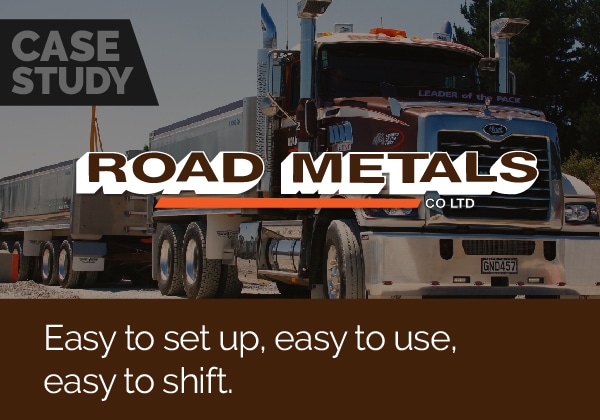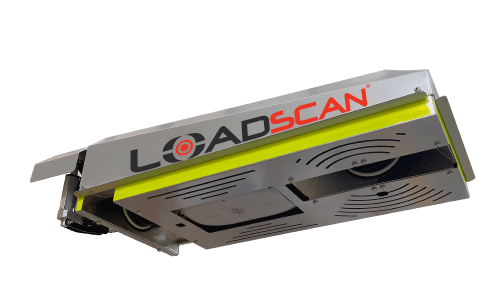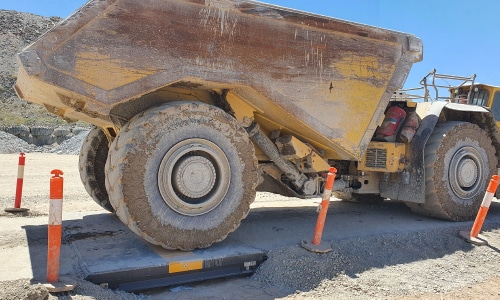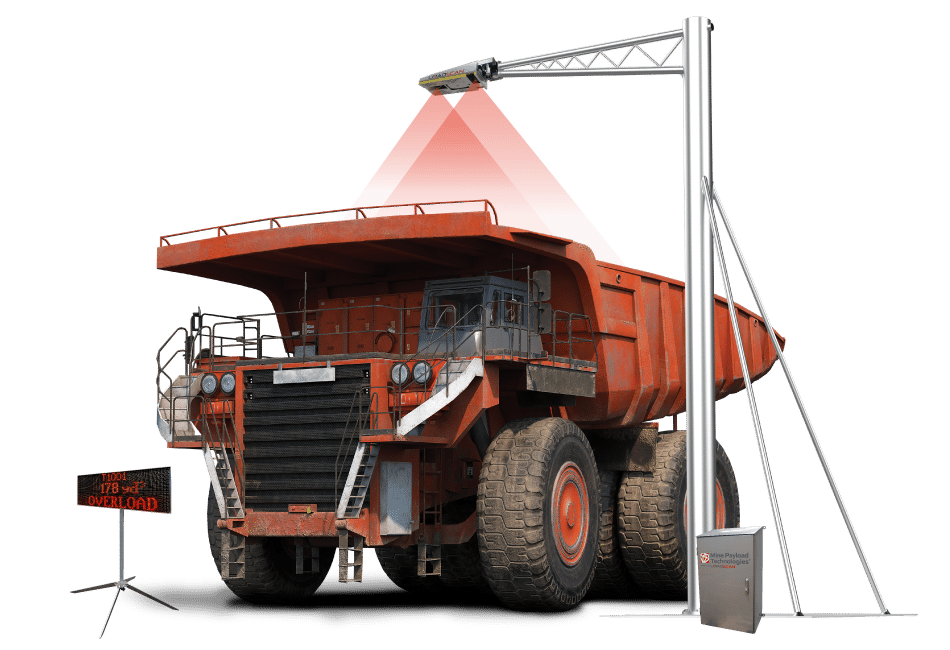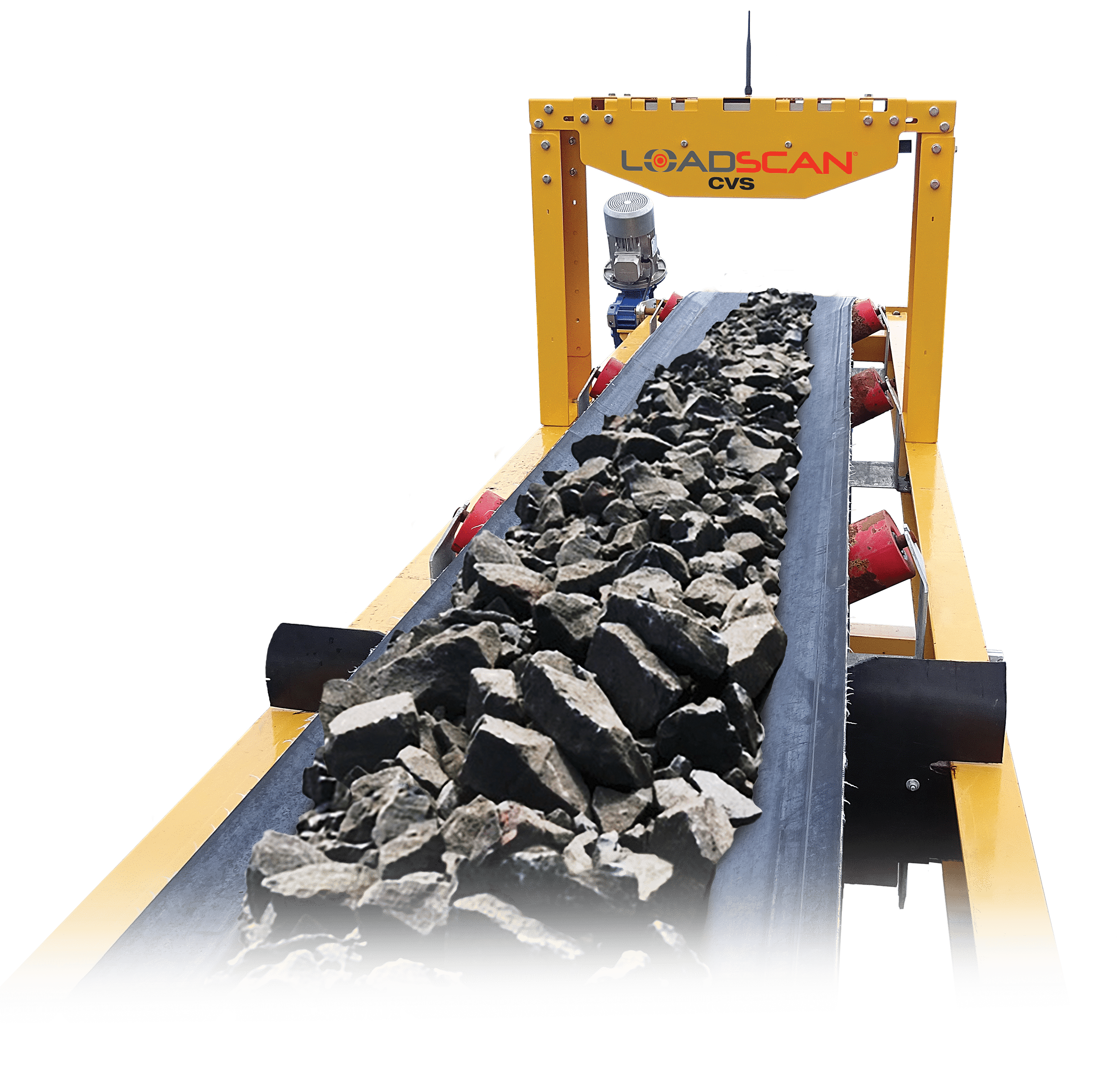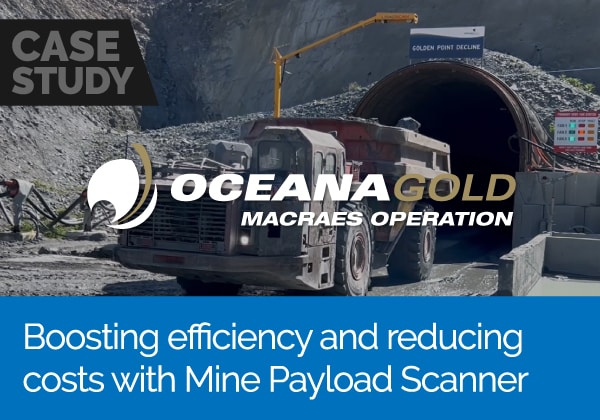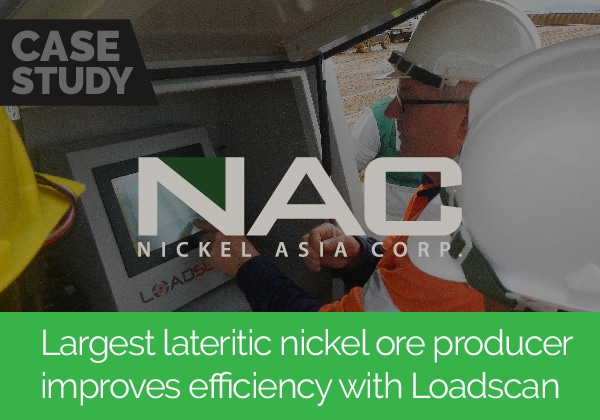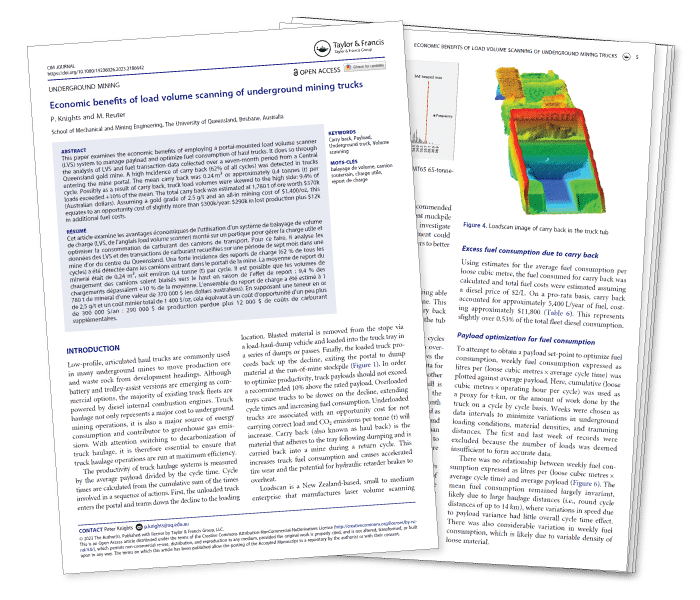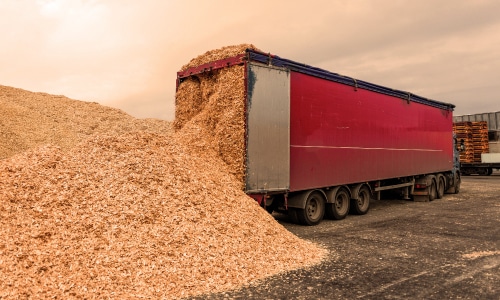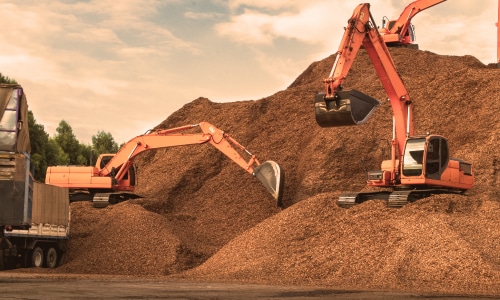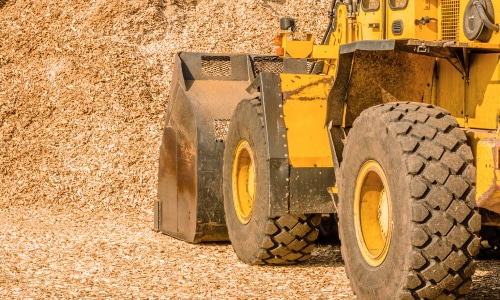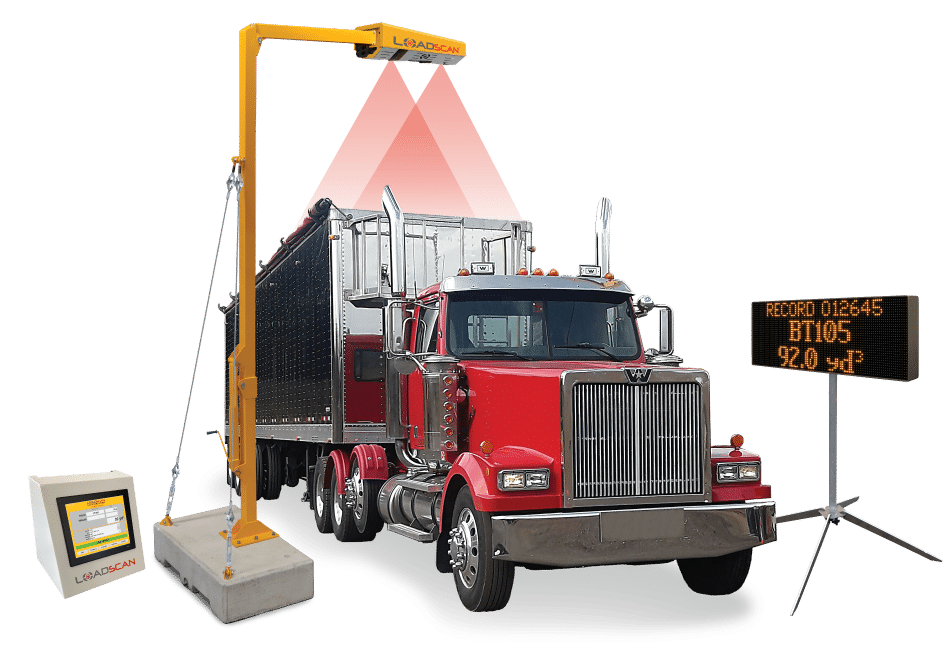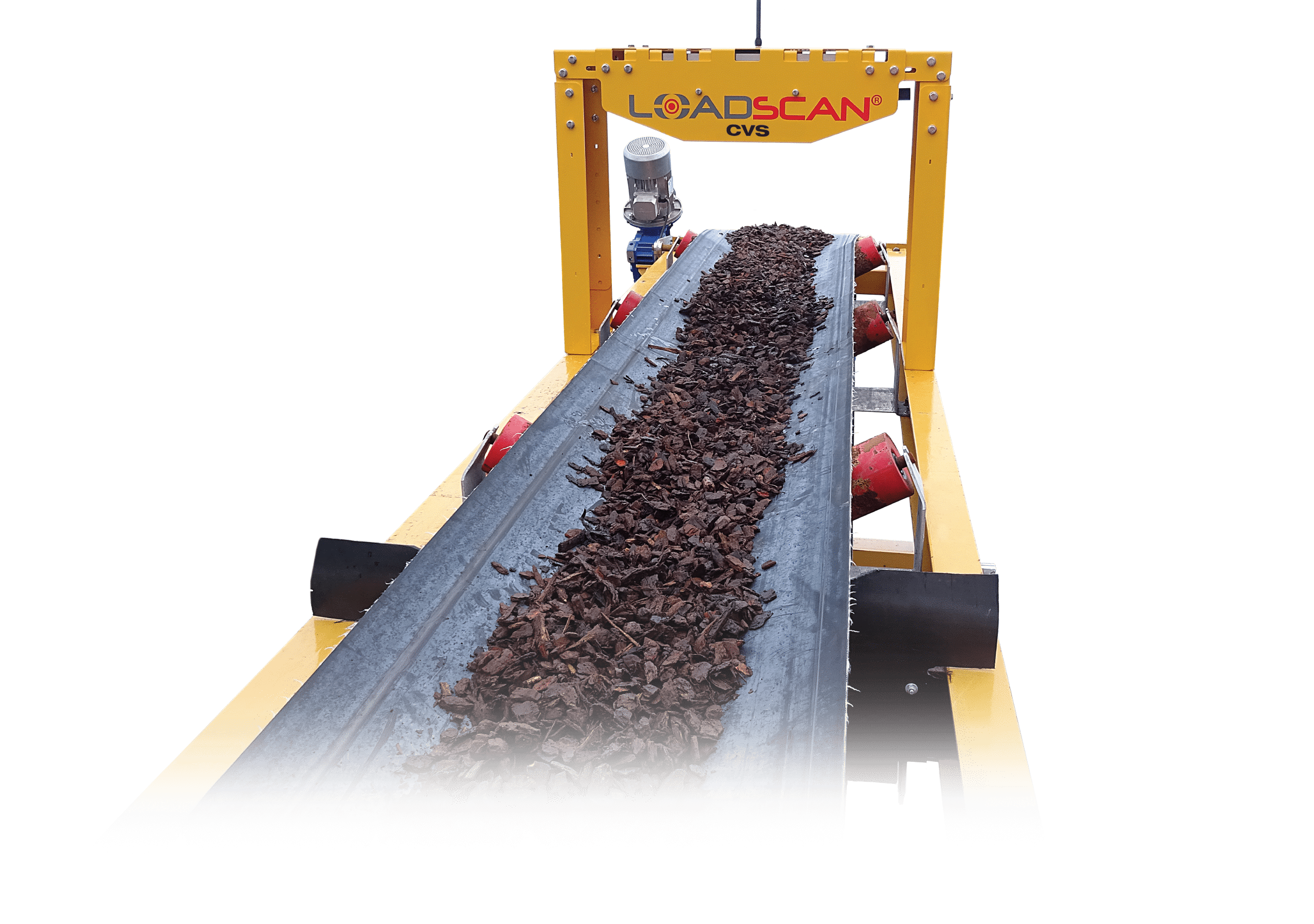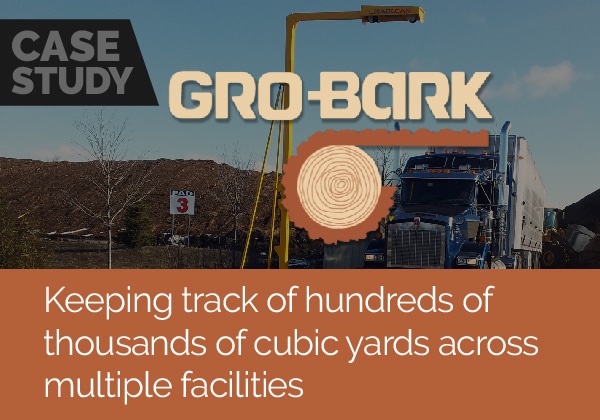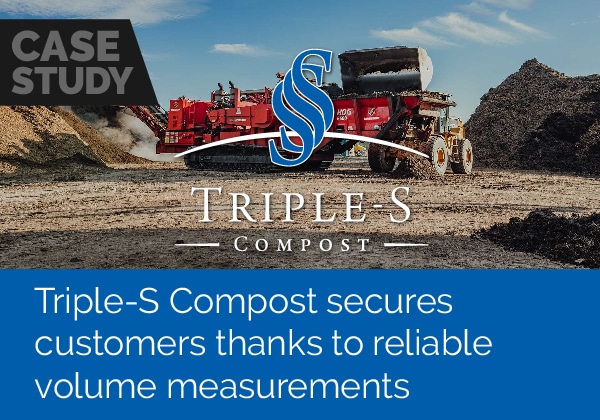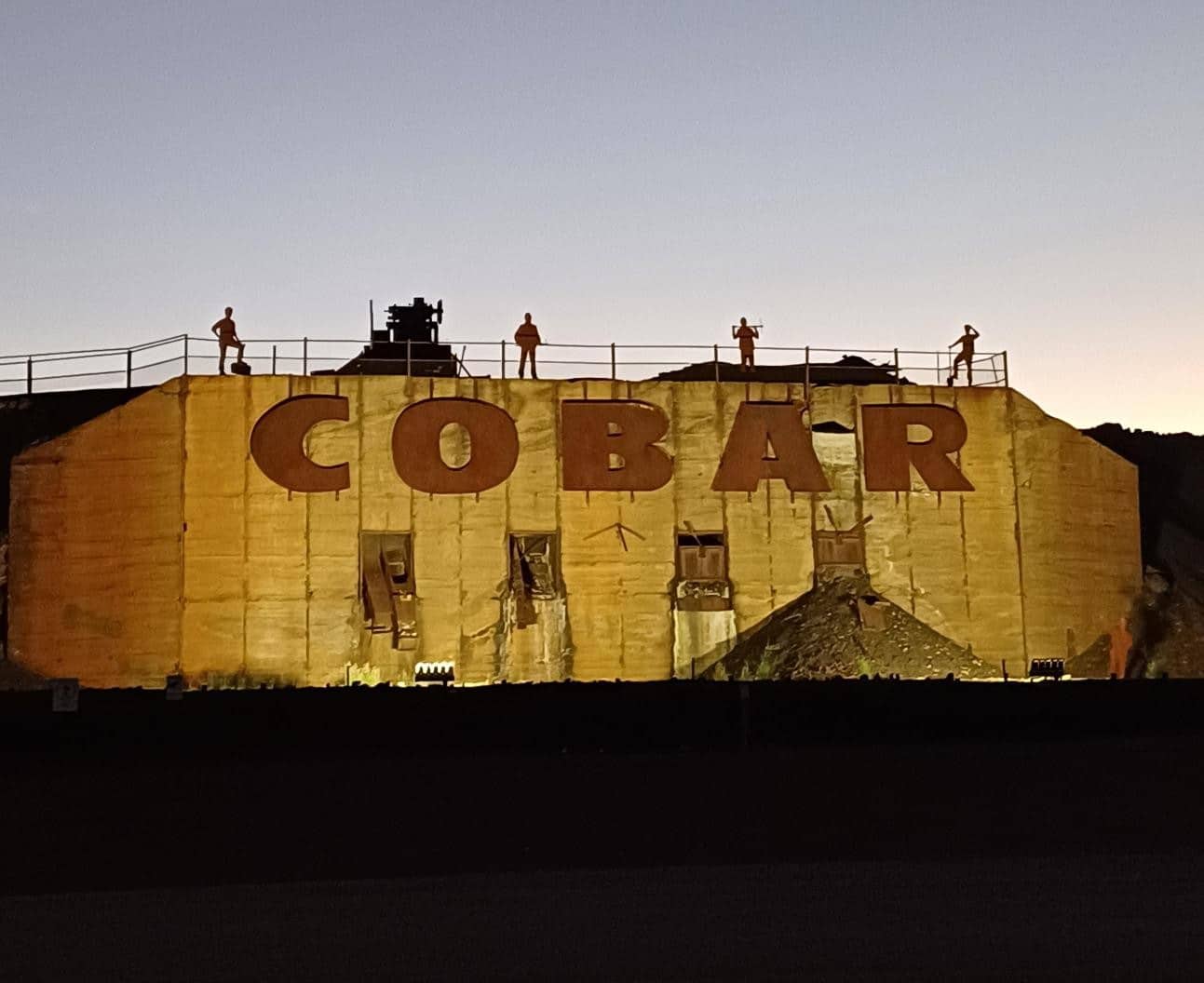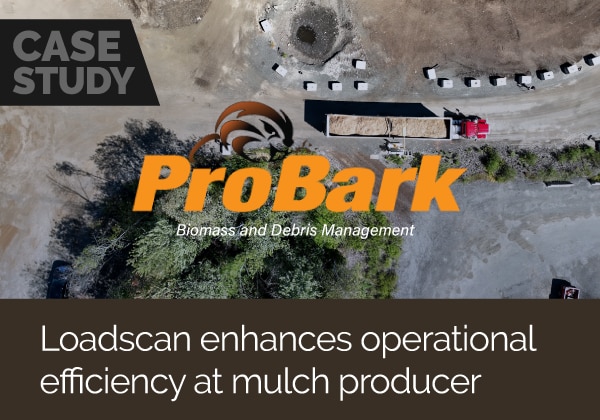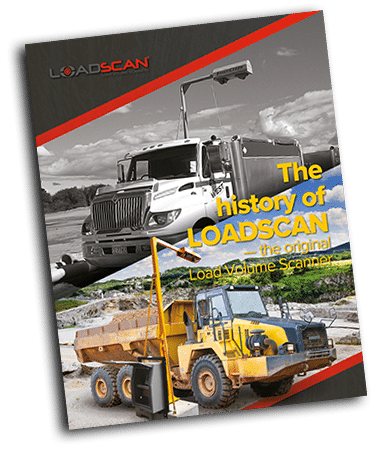Optimizing Mining Operations with Pitram and Loadscan Integration at CSA Cobar The MAC [...]
An introduction to volumetric truck measurement
Volumetric truck measure is the size of a truck-load, measured in cubic metres or cubic yards. This is a standard traded quantity in the civil construction industry (and others). Civil Engineering works are scheduled and paid for in cubic metres/cubic yards and volumetric truck measure is typically specified in contracts as the tradable quantity. Truck measure is defined as a loose-measure and bulking factors or compaction factors may be applied to relate this to solid-measure (as determined by site surveys) when quantifying excavated, stock-piled or filled volumes carted and traded by truck and trailer.
The Load Volume Scanner (LVS)
The LoadScan Load Volume Scanner (LVS) is a is a non-contact ‘drive-through’ measurement instrument designed to measure loads of flowable solids (particulate materials) in truck and trailer units. Such materials include civil construction and landscape supplies such as rock aggregates/gravel, sand, soil, spoil, bark, fertilizer or wood-chip and other agricultural and mining materials. The LVS is designed for use with conventional (rectangular bodied) road trucks or truck & trailer units and off-road dump trucks. Vehicles are scanned by driving slowly below an elevated Scan Head. This scanning process is fully automated. The LVS works on the principle of comparing empty scan profiles and load scan profiles for the same vehicle to compute the load volume.
The LVS has a high degree of ‘suitability for use’ for trade situations where flowable solids are traded by truck-load, over a range of industries, notably civil construction, quarrying/mining and landscape products supply where volumetric “truck measure” is the standard traded quantity.
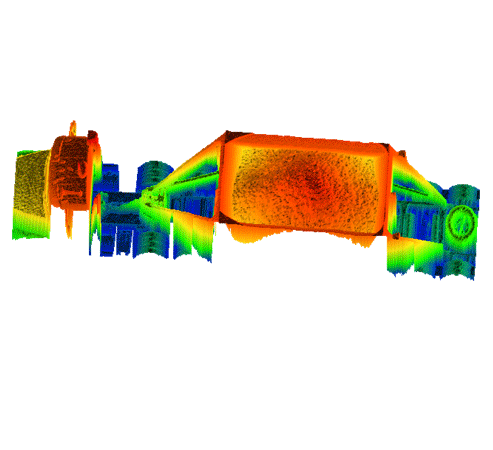
The Problem of Seller-End and Buyer-End Volume Discrepancies
The LVS developed out of long-term problems in the civil construction and related industries. Civil engineering earthworks are tendered, scheduled and generally paid for in cubic metres/yards. Traditional methods of determining loose volumes, including weighing trucks, weighing bucket-loads, counting bucket-loads or counting truck-loads have proven to be often inaccurate in determining cumulative bulk volumes. These inaccuracies are due to a number of factors, including easy abuse of systems by operators. Generally these inaccuracies favour the supplier, creating an inequity of trade and often resulting in disputes.
Traditional Methods of Determining Truck Measure (Seller Side)
Common methods for determining volumetric truck measure at the point-of-loading include:
- Weighing using weighbridge and converting to volume
- Weighing using inline weighing system on loader bucket and converting to volume
- Counting scoops using loader bucket of known capacity
Measuring weight and applying conversion factors to determine volume is not always accurate and there are many variables involved. Some issues are:
- Weight varies greatly, depending on the moisture content of load material. If a stockpile is wet, then the material may be a lot heavier than if the stockpile is dry.
- A stockpile can become wet because of rain, or from deliberate wetting of stockpiles to prevent dust. This practise which often occurs in quarries, works in the suppliers favour.
- If the material is wet when loaded, it can weigh considerably more at the point of loading than at the point of unloading as water run-off occurs in-transit.
- Conversion factors are typically computed on a dry day in carefully controlled conditions and do not necessarily reflect the weight-to-volume ratio of supplied materials. Material density and moisture content can vary considerably across a quarry site and with depth. Even in a single stockpile, the density of material scooped lightly off the top or side can be quite different from material dug deep from the bottom of the heap.
- Loader buckets may be certified (brim measures) but there are well recognized issues with counting buckets as a method of determining truck measure:
- In practice operators do not load each bucket consistently to the same level. In fact the loader operator cannot generally see the scoop very well and certainly it is not practical to get out and strike-off (level) every bucketful. This also varies from operator to operator.
- How the bucket is pushed into the stock-pile significantly affects the effective volume when transferred to truck bin. For example, pushing the bucket hard into the bottom of the stockpile produces a more compacted load than loosely scooping off the side of the stock-pile.
- Due to the self-compaction/settlement of heaped material under its own weight, multiple bucket-loads may not equate exactly to resultant cumulative heaped volumes in truck bins or in stockpiles generated from truck loads. This issue extends to differences in cumulative heaped volumes generated by small bucket loads or generated by large bucket loads because of material self-compaction within a single scoop.
- Generally the supplier can manipulate the system to their advantage. Certainly in New Zealand the trade measurement authorities are well aware of the issues around measurement by counting certified buckets.
Traditional Methods of Determining Truck Measure (Buyer Side)
Common methods for checking volumetric truck measure at the point of unloading include:
- Level and measure (manual survey of levelled loads in truck bin using tape measure)
- Survey load on ground
- Survey stockpile (multiple loads)
- Unload truck/trucks into hole or container of known capacity.
- Measure truck capacity and count loads
These practices are widely used on a ‘random check’ basis but are very time consuming. A common complaint about the level and measure process is that it requires re-shaping and walking on the load which effectively changes the load volume. Disputes also commonly arise over load settlement in transit. This is the change in volume of a load due to the product bedding down as a result of vibration, braking and bumps during transport. Often the differences between what the supplier claims was in a truck (in cubic metres or cubic yards) and what the buyer claims, is quite significant. Our experience is that the actual volume changes due to load settlement are small. But this does depend on the type of material, and the length and quality of trip. Unloading a truck onto the ground and then re-loading it with the same material and manually surveying the load (level and measure) at the buyer end is one way to check if the supplier’s claimed volume is accurate. This method results in a load that should be very close in volume to the original loaded volume at the point-of-loading, before travel influences.
It should also be noted that volumes computed by surveying large stockpiles generated from multiple truck-loads over a period of time may not result in quantities that match the cumulative total of all the truckloads as the stockpile may be closer to “solid measure” (compacted) than “loose measure” which is the measured/traded quantity.
A truck or trailer capacity may be determined by manual measurement, but in practice trucks and trailers are not loaded exactly to capacity every time. They may be at less than capacity or loads may be heaped above the sides to greater than struck capacity. Loader/excavator operators often cannot see inside the truck bins as they are lower than the bin sides. It is also difficult to load into the bin corners with a loader or excavator. And in fact, in many cases trucks would be over-loaded if filled to capacity.
Final Comments
As discussed above, volumetric truck measure is a standard tradable quantity within the civil construction industry. This also applies to the related quarry and landscape supply industries and other industries where flowable solids are carted and traded by the truck-load.
The LoadScan Load Volume Scanner (LVS) is a measuring instrument that replaces manual measurement to determine volumetric truck measure. The LVS is a valuable tool for these industries and has several advantages over manually measuring truck or trailer capacity or loads:
- The system is fast and fully automated and allows for every load to be measured.
- The LVS measures the actual load volume in a truck or trailer bin for each measured load, regardless of theoretical bin capacity.
- The system is non-contact so measuring the load does not interfere with the load volume in any way.
Our experience is that the LVS is accepted as providing a fair measure for all and acts to prevent many disputes that otherwise occur. It is also our experience that suppliers such as quarries that use our scanners may lose the small advantage of selling by more easily manipulated methods but their customers are happier. In the New Zealand situation we are finding that suppliers are winning contracts because they sell through a scanner and in fact sometimes contracts stipulate that a scanner must be used.
Truck measure is a happy median between bucket loads and stockpiles and as such is equally equitable to seller and buyer and a device that accurately determines volumetric truck measure is highly suitable for use. The LVS is such a device.

